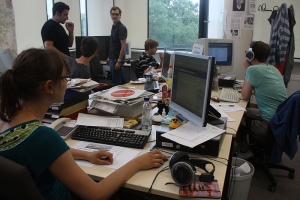
Newsrooms Need to Do More to Reach Out to Communities
The media landscape is shifting and becoming more participatory, and people want to do more than just read the news. They want to be co-creators, collaborators and distributors.
While newsrooms have invested in various forms of community engagement — from mobilizing local bloggers into coordinated networks to using robust social media strategies to organizing community events — there is still a lot we don’t know about how to assess and measure the impact of this work.
In the report Engaging Audiences, J-Lab surveyed 783 “digital-first” news startups (278 responded) on their community engagement strategies. One of the key findings is that newsrooms are unable to track how those efforts are moving communities up a ladder of engagement. “Nearly eight in 10 respondents to a national online survey said they could not measure whether their audience-engagement strategies were also converting readers into advertisers, donors, content contributors or volunteers,” the authors wrote.

Newsrooms often rely on online tools to reach out to communities.
The report found that most social media tools are used to broadcast rather than engage, and the metric most often cited for measuring engagement was Web traffic. The report argues that journalists need to develop better tools to assess engagement and there needs to be more conversation and sharing of lessons between newsrooms.
For me, what is more important than what we don’t know is the fact that we keep asking good questions. That’s encouraging. The J-Lab report is the third major report in recent years on newsrooms and community engagement.
These reports show that one of the biggest challenges facing newsrooms is taking community engagement offline and back into communities. Most newsrooms conduct community engagement exclusively online and as such are missing a huge opportunity. Online engagement is attractive for a number of reasons:
- There are good tools and trainings for journalists (and new tech is always exciting).
- It maintains a buffer between newsrooms and communities.
- It’s cheaper than in-depth, in-person relationship building.
- It avoids the appearance of community and political organizing.
I believe that community organizers have a lot to teach journalists about expanding their reach, setting goals, defining success and measuring impact. For two great examples to chew on, check out California Watch’s work on school building safety and lead in jewelry. It is worth noting that California Watch places community engagement as a top priority for its work and is experimenting with how best to reach out.
Original photo by Wikimedia Commons user Mephisto 97.6